|
|
Post by Dietmar on Mar 27, 2010 6:42:28 GMT -5
We already have speculated in the thread about the 1851/52 Plains Indian delegation to Washington that there´s one group photo of said delegation that possibly shows Lone Horn, the famous chief of the Miniconjou, who was part of the trip West after the first Treaty of Fort Laramie. (see here): amertribes.proboards.com/index.cgi?board=wash&action=display&thread=893Here are all known portraits of Lone Horn, taken from several group photos plus one sketch painted by German artist Carl Wimar, that Kingsley has sent me last week: 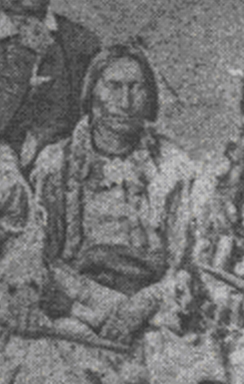 Lone Horn (?) 1851 [edit: NOT Lone Horn, but an Arapaho delegate] 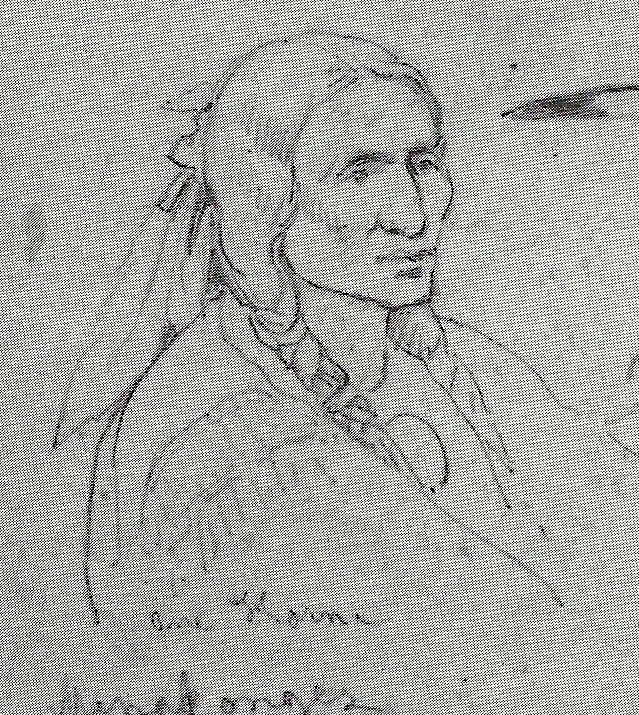 Lone Horn by Carl Wimar 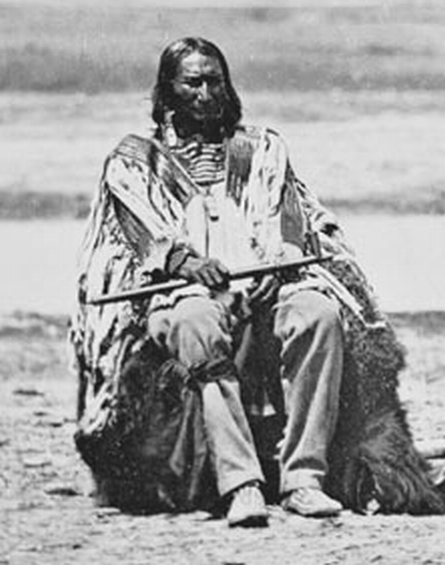 Lone Horn 1868 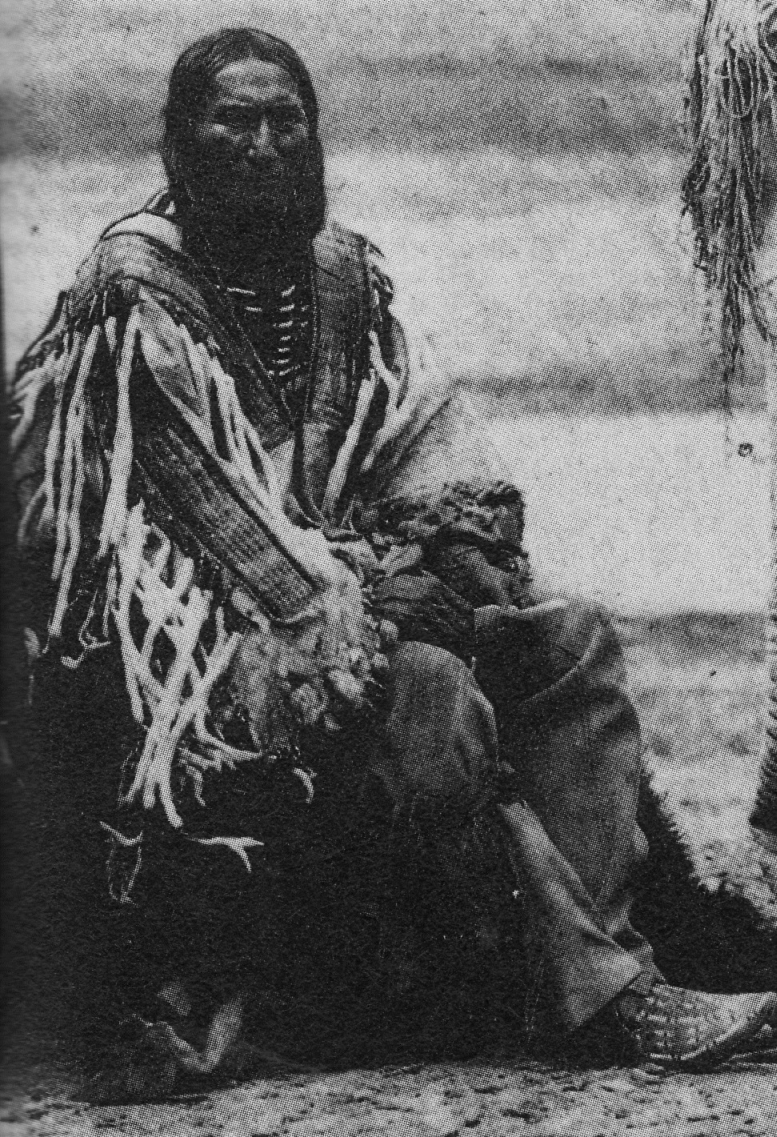 Lone Horn 1868 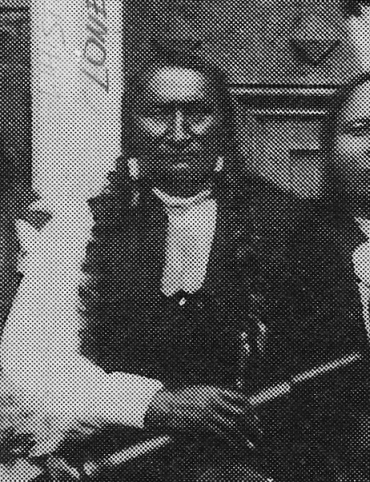 Lone Horn 1875 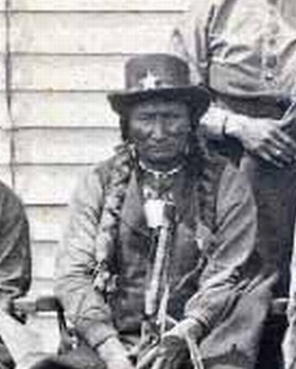 Lone Horn 1875 Please send in your opinions, especially about the 1851 delegation portrait. Thank you. |
|
brock
Junior Member
 
Posts: 81
|
Post by brock on Mar 28, 2010 19:02:28 GMT -5
According to the Clown family who is a direct descendant of Lone Horn through Talks About Him, Lone Horn died in the fall of 1874. I think a big physical difference in the photos is in the pipe. The 1868 pipe is obviously a council pipe which would be a head man's pipe. The pipe in the 1875 photo is a much smaller personal pipe with a different design near the bowl. The pipe is part of the sacred bundle so to be substituted for would be doubtful. I seriously doubt that the 1875 photos are Lone Horn. Don't know on 1851. Be nice if the picture showed the entire pipe.
|
|
|
|
Post by Dietmar on Mar 29, 2010 4:55:14 GMT -5
Hi Brock, thanks for answering. I uploaded new scans of the 1875 photos: 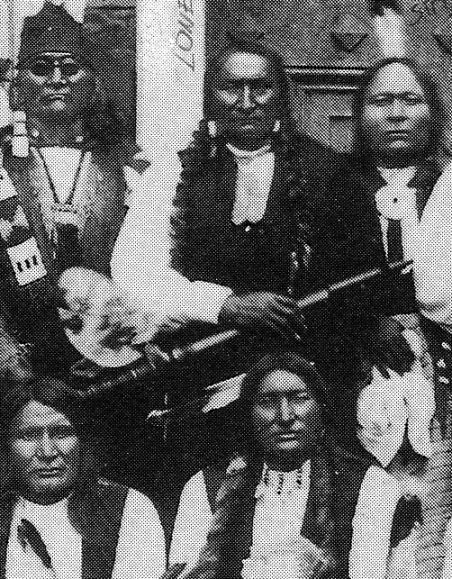 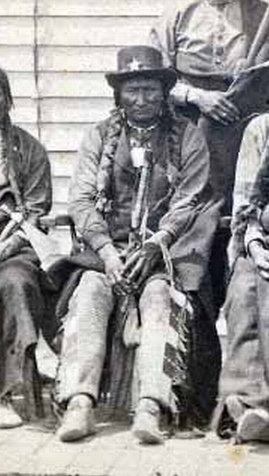 From what I see, you´re right, it is a different pipe. However, I´m surprised about your statement about Lone Horn´s death in 1874. There are so many sources that mention Lone Horn being in Washington in 1875 as the key delegate to council about the Black Hills. Could you please elaborate that. Thanks. |
|
brock
Junior Member
 
Posts: 81
|
Post by brock on Mar 31, 2010 3:23:18 GMT -5
Touch The Cloud went as Lone Horn in 1875.
According to the Doug War Eagle when Custer came into the Black Hills in 1874 it caused a ruckus. Lone Horn had drawn up an agency for himself that included the Black Hills and all the family burial sites. Apparently it had been discussed during the 1868 Fort Laramie talks but was never acted upon. So he was, at least in his mind, following up. However he sent Black Tongue in 1872 to do his talking. Black Tongue knew some English, and he trusted him. However he wasn't from Lone Horn's band.
When Custer came into the Hills, the Lakota were confused as to why he was there. Lone Horn thought they were there to survey his new Agency boundaries but many, including Waglula doubted it. There was anger all around, especially when they found that their band had been represented by a non-band member. Lone Horn got worried and sent word to Black Tongue down at the Whetstone/Spotted Tail Agency to find out if anything more had happened in DC in 1872. When word came back that there might have been a private meeting between Red Cloud and the President, Lone Horn worried and blamed himself for sending someone else when it was his duty to go. The band and family members were furious with him. He died two months afterwards. He spent those two months praying and fasting constantly to try to undo the damage.
Touch The Cloud requested that everyone wait on any actions until he had gone to Washington in 1875 with Black Tongue to see if the Black Hills had indeed been signed away...and also to try to clear his father's name. He went as his father.
Anyway that's the family story.
|
|
|
|
Post by kingsleybray on Apr 14, 2010 9:03:00 GMT -5
Brock, thankyou very much for the information you posted on Lone Horn and the Black Hills issue. Lone Horn certainly went to Washington with the Cheyenne River Agency delegation in May-June 1875, then attended the great Black Hills council near Red Cloud Agency the following September, when he spoke out against the proposed sale or leasing of the Hills. During October he travelled north to counsel with Sitting Bull at the Hunkpapa fall hunting camp on the lower Yellowstone, assuring Sitting Bull that he had declared against the sale proposals. He then (roughly, November) returned to his own wintering camp on the Cheyenne River. The exact location of this camp would be interesting to know. It clearly wasn't at the agency located near the mouth of the Cheyenne, but it may have been along the middle course of the main river, maybe the Cherry Creek area, or even further up near the Forks. Do the family know where Lone Horn himself was buried? That might help pinpoint it. Lone Horn died during the winter 1875/76 - I lean to it being early, around December perhaps. The words used, that he died of "grief" or "shame" over the Black Hills match the account you give, with the chief feeling that he had been morally tainted by his involvement in the Black Hills negotiations. It was a tragedy, Lone Horn was one of the great statesmen of the Lakota people.
Touch the Clouds went to Washington two years later, in Sept. 1877 as part of the delegation from Spotted Tail Agency. He went as the spokesman for those Miniconjous who had at the end of the 'Great Sioux War' surrendered at Spotted Tail.
Kingsley
|
|
|
|
Post by Dietmar on Apr 14, 2010 16:23:48 GMT -5
Brock,
aside from the conflicting dates, there are some fascinating details in your post.
I never heard of Black Tongue but would love to hear more. Can you tell more about him? Did he have another name, because I can´t find him among the delegates that went to Washington in 1872?
Lone Horn ending his life in such a way was very sad. I always thought him to be one of the most interesting and fascinating Lakota leaders.
Best
Dietmar
|
|
brock
Junior Member
 
Posts: 81
|
Post by brock on Apr 14, 2010 17:51:07 GMT -5
Kingsley,
When I was in Vietnam I was a medic. On a combat mission a surgeon told me one of my friends had died. I didn't believe him and continued to try to revive him. As it turned out he sat up and asked what happened. It was my first lesson in don't always buy in to the established ways of doing things.
Later I spent time as a stock broker and learned that you could not count on lawyers nor accountants work to be as solid as the financial community thinks it is.
Which brings me to history. I have found historians have a tendency to revere dates, numbers, body counts, and names. They take these and try to rebuild events and real people with them while taking verbiage to make these things sound like a definite. When I started this I was one of those people, not by choice but because that's the way I thought it was supposed to be done. But my quest to find out who somebody really was in their heart of hearts led me to the different families that I am friends with. I trust them and they trust me. I have developed a strong relationship with both Ernie LaPointe and the Clown family because I believe they should tell their own family stories without judgement by myself or through other paperwork either by the government or others. Unfortunately I find most of the paperwork used to define Lakota history told through the eyes of a culture that never took the time to understand things through their eyes...even when they thought they were. I also spent five years working for the US government as a civilian so I know that the records that they keep are not always sure bets and usually have agendas of their own (lol).
Although I have not examined their probates papers very closely because of current proximity (didn't need them for the DVD), I do know they will be included within their oral history book which is about 5/6 done. Lone Horn's wife Stiff Leg's probate will be in it along with his son Talks About Him and his daughter Four Horses. I suspect Lone Horn will get a good mention in their probates because of the close relationships. I like probates because it is a document that the family members living at the time can participate in. It is also the main document used for determining relations and heirs in a courtroom.
I guess the bottom line is I will not sit in judgement of either of these family's oral histories. These families have suffered for many years from intended and unintended cultural warfare in subtle ways. A good way to say it is how Ernie told me once. It is like somebody walking into your living room and telling you they know more about your family than you do. I would venture to say that most people would not take to that very well.
So I will stand by the families stories just as I stood by the families when so many at the beginning ranted that they weren't who they said were.
In answer to where the winter camp was, I was fortunate enough to be taken there and it is at a place they call Eagle Head Creek within Custer State Park in South Dakota. It is called Eagle Head because of a rock that looks like an Eagle Head. It has a spring that runs 365 days a year near there and steep hills surround the area to block the cold winds. I don't think it's generally referred to as Eagle Head though. I believe it is French Creek.
|
|
brock
Junior Member
 
Posts: 81
|
Post by brock on Apr 16, 2010 3:59:09 GMT -5
I talked to Doug about the dates. He stands by 1874. We will comb through some of the probates over the phone sometime Saturday. One of the family members just delivered Lone Horn's wife Stands On Ground's probate. He said his brother also received one from the same family member that Doug thinks he said it was for Frog which of course is his son. And apparently he has his son Standing Elk's. One that I was mistaken on is Talks About Him. Talks About Him died before probates were issued in 1901. However he has Talks About Him's widow Otter Woman #2 (Dull Knife's daughter) who remarried Swift Bear. Her probate has Talks About Him's info on it. He also has Peter Talks who would be Lone Horn's grandson. And of course he has Touch The Cloud which I posted majority of it but I don't think it was all. So it should be a pretty good sampling of info by a number of different family members. And of course he still has Stiff Leg and Four Horse.
There are quite a few more probates but I don't know all of them so it's better not to get to far ahead of myself.
Which leads us to who would have taken his name other than Touch The Cloud. Doug told me it could have been any of the sons. He believes the village at Fort Robinson named Lone Horn's camp was actually Standing Elk's.
And now back to the picture. Something else in it may be a bigger clue than anything else discussed thus far. The fur wrappings on his braids. This was a special medicine. This man would have worn it ALL the time. It most likely would have been shown to him in a vision and whatever animal fur was used would have been an animal helper that would have protected him. Things like this weren't fashion statements. In the last picture the fur is so thick it almost looks like an animal could get in there. It corresponds much closer to picture #1. So I asked did Lone Horn wrap his braids in fur. He told me 'no'. So I asked who the heck in the family would have taken Lone Horn's name that would have worn this medicine. It didn't look like the Standing Elk. He's too old for Talks About Him. He told me he thought it could be Spotted Elk. Spotted Elk would have been entitled to use the name also. He also would have been 49. So I would suggest asking Calvin Spotted Elk first. I think many of you on here know who he is. He's the closest living relative to Spotted Elk. Aside from the pipe I think the key is in the fur braid wrapping.
|
|
|
|
Post by kingsleybray on Apr 16, 2010 5:12:06 GMT -5
thanks again brock for the new information which is never less than fascinating! The problem with the Spotted Elk id is that he also went on the 1875 delegation, and in fact he is the man seated right in front of Lone Horn in the detail from the group photo posted above. He is the man wearing the eagle feather slanted down to the left (his right). If you look carefully you will see the outline of the head of the rawhide horse effigy just below his dentalium choker; it is plainly visible in the 'new' group photo recently identified by Dietmar at Minnesota State Hist. Soc.
I just want to also register that for instance most of what I wrote above about Lone Horn's involvement in the 1875 Black Hills council, his subsequent visit to Sitting Bull, and so on, is derived from Lakota statements, in particular those of Black Elk and his friends to Neihardt in 1931 and a number of statements made in 1923 in testimony to Ralph Case's Black Hills litigation. These were Lakota people who were in most cases eyewitnesses to these events - Black Elk not an eye-witness but recounting what his father told him, the elder Black Elk being present at the Black Hills council.
I then use the standard documentary record, agents' reports, newspapers and so on to try and amplify the details. Hopefully using all sources we can come up with something that allows us a wider perspective on the whole context. We have to allow for the usual spin, distortion, total misunderstanding of another culture, simple truth that no two people ever see an event exactly the same way, our own failures of insight whatever - but we have to make the effort.
Great to hear about the forthcoming book - do we have any idea of a date yet?
All the best
Kingsley
|
|
|
|
Post by Dietmar on Apr 15, 2011 4:50:07 GMT -5
In "HISTORY OF DAKOTA TERRITORY" by GEORGE W. KINGSBURY (1915) there is a little story about Lone Horn´s wives: "Fifteen miles above Sully, on the west bank, we come to the "worst agency on the
river" — Cheyenne. The Indians here have never been anything else than hostile ; but they
have been going backward rather than forward of late. They have had for a year or
more an agent from New York City, a theorist, who promises well but performs wretchedly.
He was soon at loggerheads with the military and with all the white men there. When
we left, the arrival of his successor on the boat behind us was anxiously looked for. 1
do not imagine he was a bad man at heart, but he was made up of theories which would not
work, and he was incensed and provoked because they would not. Matters had reached
that condition when two soldiers had been waylaid and shot within a week before our
arrival, and the Indians had engaged in a genuine war dance on last ration day. When
it is considered that some seven thousand Indians draw rations here, the situation cannot
but be regarded as serious. For some miles below, the villages, composed of canvas tents
and tepees, dotted the hillsides, while their horses could be numbered by thousands. It
is in these horses or ponies that the wealth of these wild Indians is counted. They do not
pretend to plant anything, and they raise no other kind of stock except dogs. Many of
their ponies are small, trim and neatly formed, but most of their horses are "American"
ones. They are not anxious to sell them but a fair one can be bought for from forty to
fifty dollars, the money afterward going to the post trader for about half its value in
beads and blankets. A motley crowd of five or six hundred gathered at the landing place
of the boat, and we had an opportunity of witnessing a bit of tomahawking done scien-
tifically. Two squaws were standing with the crowd quite near the boat, when one sud-
denly drew her tomahawk and attacked the other. The first blow cut a piece out of the
side of her head, and the second was still better aimed, but her weapon caught in her
blanket and the blow fell short. By this time the warrior squaw was secured, and the
wounded one taken away to be treated. We afterwards learned that the cause of the
quarrel was the old story of jealousy. An old chief. Lone Horn, had one old squaw and
took another not so old. He seemed to like the younger one best. The older one grew
jealous, concluded to kill her rival, and undertook to do this in as public a manner as
possible. We learned some time later that Lone Horn, in order to get rid of his domestic
troubles, abandoned both and made a new alliance." I wonder if there is any truth in this story? |
|
|
|
Post by kingsleybray on Apr 15, 2011 7:51:47 GMT -5
Thankyou, Dietmar, for posting this story. It's obviously early 1870s, but is there a date to the anecdote? And what is the page reference?
|
|
|
|
Post by atebet on Feb 29, 2012 9:44:19 GMT -5
Hello folks,
My name is Tebet and I am from Brazil. Here we have a religion called Umbanda which was created 102 years ago only but it is captivating lots of people, why? Because it is pretty much the Ghost Dance accomplished by the Lakotas prior to the Wounded Knee Massacre.
We work based on three points - Indians, representing the Strength and passion, Black Slaves, representing the humbleness and wisdom and Children, representing what is pure and naive.
We are mediums and dress white, play drums and sing songs. Then the dead use our bodies in order to bring messages of love, freedom, passion, peace, respect towards mother nature and its children and many other beautiful things.
The reason I am writing is the fact I have been an exchange student in 1994 in St Louis, MO and one year ago I was there again and visited the museum of Lewis and Clark expedition under the Arch, well, I have always loved and enjoyed the Red Way and Red Roads, but that day as I walked out towards the shop I faced a big wall with lots of Native American books, then I started opening them and felt something good but strange. Every book I've opened I've ended up falling on a Sioux page... it wasn't one they were 7 books in a row. But those books had many pages and lots of different tribes mentioned there. Of course I've bought the ones that menioed the Sioux more and the more I read them the more I knew there was a message for me there.
Then during the Brazilian Ghost Dance an indian spirit on some guy's body told me indeed I had been a Sioux Chief in my previous life. That messed more with me. Then I spoke with another guy who sees the dead and talk to them on a regular basis, a very spitualized person who also practices Native American rituals, he told me he saw me there by a big river with young kid, so I am assuming I had been either Lone Horn or Black Buffalo as this happened in between 1780 and 1800, as he could define who I was or the exact date.
Yes I know it sounds weird, but I've found those two names after I've asked Wakan Tanka for a vision or a hint before going to bed and it came to me.
If anyone can help with info on Black Buffalo mainly I'd appreciate it.
Thank you all!!
Tebet
|
|
|
|
Post by Dietmar on Feb 29, 2012 15:35:13 GMT -5
Hello Tebet,
what you said about the parallels to the Ghost Dance is interesting indeed.
But... to be honest... please, please be careful when you state you were a Sioux Chief in another life. I am not an Indian myself, but I know that it could be an affront to many, especially to those who are descendants of the ones you mentioned.
Besides, this is basically a history site, not an esoteric site. I hate to sound unfriendly, but I constantly get emails from people who think they are related or spiritually connected to Sitting Bull, Crazy Horse or any other important Indian Chief.
Nevertheless, greetings to Brazil
Dietmar
|
|
|
|
Post by atebet on Mar 1, 2012 14:44:13 GMT -5
Ok and thanks for the hint!!
All the best
Tebet
|
|
|
|
Post by swiftbird659 on May 15, 2012 22:54:11 GMT -5
Just something interesting! Minutes of a council held at Fort Pierre, Nebraska Territory on march 01, 1856 General William S. Harney met with Lone Horn and requested him to turn in the names of his head chiefs and chiefs under them. "One Horn", chief of the Minneconjoes, gave in the names of his chiefs: The elk that bellows walking, The one that makes room, The one that flies away, The Fire Thunder, The one that shoots the bear running, The Standing Bear, No Heart, The one iron horn, The one that kills the first.
|
|